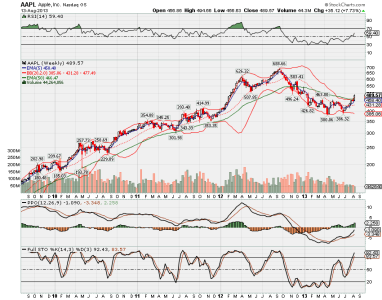In my endless search for understanding of trading and trading indicators, I've came accross some interesting information that I want to share with you guys. Maybe some of you more experienced traders/investors have heard of this already but I never had until recently. Nor have I heard anyone else mention it on this board.
Most traders use the 14-period RSI but according to Larry Connors, "statistically, there is no edge using the 14-period RSI. The better way to use it is by shortening the period, especially to a 2-period RSI. Using a 2-period RSI, the,
the lower the reading, the greater the performance. This means that traders should look to begin building strategies around stocks with a 2-period RSI readings below 10. A reading below 5 will give you a greated gain. A reading below 2 is even better. This strategy has correctly predicted the short-term direction of the S&P 500 83.6% of the time.
There are 4 rules to this strategy.
1. The S&P 500 Index is above its 200-day moving average.
2. The 2-period RSI of the S&P Index closes below 5.
3. Buy the S&P on the close.
4. Exit whent he S&P closes above its 5-period moving average.
Results from 1995-2007
Number of Signals: 49
Percent Correct: 83.6%
Total S&P Points Made: 522.92
Average Hold: Three Trading Days
Stocks, ETFs and other indices all show edges using this strategy. I've been observing a few instruments this last couple of weeks and it really seems to be right on the money. Using this index I would have taken a position in NUGT yesterday at $5.08 (RSI readign was below 1) and sold today at $5.79 or higher...As of this typing the RSI reading is above 71 and the price is 5.92.
Not bad huh? Of course, this is not the type of stock to invest in according to the rules, because it is below it's 200 day moving average. The reason Connors advices against it is because of the risk of investing in companies that are trading this low. He gives a few historical examples (Bear Stearns, Washington Mutual, United Airlines, Citigroup, Countrywide to name a few). I just like to live dangerously.

Anyway, hope this information pique's your interst. Happy trading!


